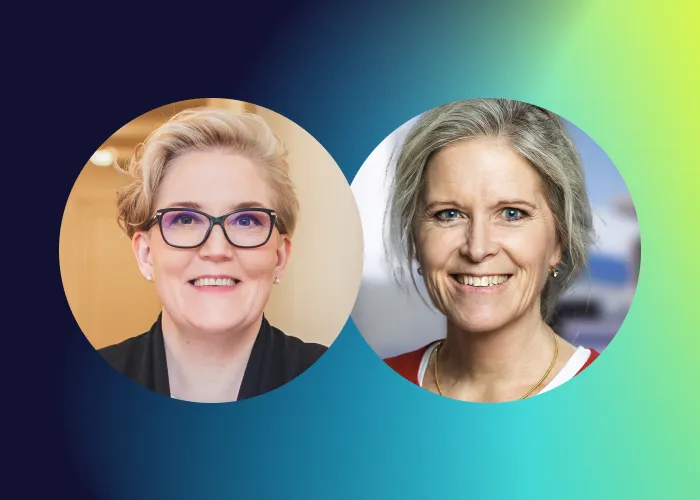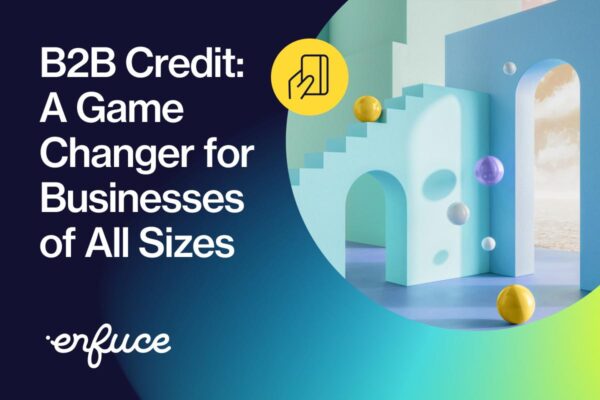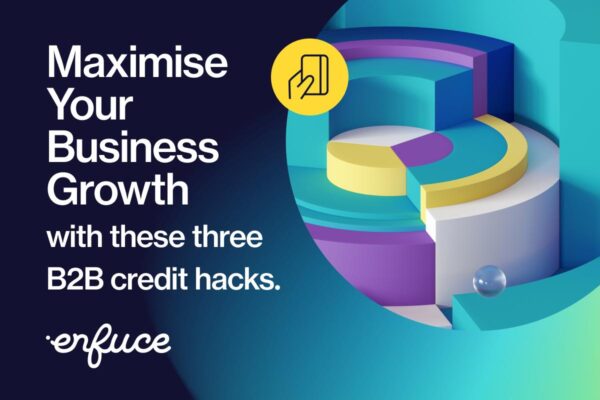Four must-dos for leaders transforming their payment business

Having led companies through transformation, Monika Liikamaa and Filippa Jennersjö get it – and share the things they wish they had known before their journeys. Read or watch the must-dos for companies who are at a point where their legacy systems and mindset and the change in the business landscape require rethinking and rebuilding of business models, tech, and processes – and where payments (and Karate Kid) step in.
OKQ8’s transformation: From fuel-centric to enabling sustainable mobility
OKQ8 embarked on a significant transformation to adapt to the tightening regulations and changing landscape of mobility. With Filippa Jennersjö in the helm, the company recognised the need to move beyond their fuel-focused business model.
“The starting point was to think about what is the business we are really in. Because it isn’t about fuel. That’s just a means to an end. What we actually want is to enable mobility and transportation of people and stuff, in private cars and in heavy traffic. Four or five years ago we set our new vision and strategy around becoming the preferred enabler for sustainable mobility,” Jennersjö says.
Jennersjö emphasises the need to reach customers wherever they are, whether at home, work, or on the road. Digitalisation plays a crucial role in this endeavour, enabling OKQ8 to establish a continuous presence in customers’ lives as the future of mobility moves towards EV charging, car sharing and maybe even self-driving cars.
Payment cards – from purchase enablers to strategic core business
Cards, both consumer and company cards, have been a part of OKQ8’s business for a long time. They have not only enabled the transactions but also carried significance as a bearer of loyalty.
“Now in the digital world, cards and the data they provide are becoming increasingly important to our business, as we can personalise our services and bundle our products. But our card business has been very scattered with different systems for private cards and company cards, and for Sweden and for Denmark,” Jennersjö says.
That is where OKQ8’s and Enfuce’s paths crossed. OKQ8 wanted to consolidate their payment methods and also focus on building data-driven services on top of the cards instead of focusing on the details around cards, technology, and regulation.
We can see regulation tightening constantly, but it’s there to protect both the companies and the consumers. Compliance is what we can deliver as our core competence, and we’re happy to free our customers to focus on their own core business
Monika Liikamaa, Co-founder and Co-CEO, Enfuce
1. Let go – give your new business space to flourish
Often when we let something go, we need to label it as bad, says Jennersjö. But that kind of judgemental view only makes the process of letting go more difficult. OKQ8 is a great example of needing to let go of something that has been crucial for society for a long time.
“Fuel has not been bad. It’s been an important part of taking this world to where it is, to certain extent, around mobility, getting to know different cultures, travelling, things like that. Now it’s become bad for the planet, so of course we need to get rid of it. It’s easier to let go of it if we see the good in it and build on that,” reminds Jennersjö.
Jennersjö often sees companies try to recreate what they previously had with new technology or new tools, whereas the real way to growth and innovation would be to create something completely new.
“Fossil fuel has made cars move around. Now electricity will do that. It would be easy to think that now we just build service stations for electricity. No, we need to build a completely different marketplace, as fuelling and all the services around mobility are changing. We need to think about the need or the wish we’re trying to fulfil for our customers, and just see the business as a means to that end,” Jennersjö says.
2. Do your ‘to be’ first – innovate something truly new
Leaders driving change are often familiar with the methodology of doing your ‘as is’ first, and then doing your ‘to be’ to build the roadmap. Jennersjö challenges this order and says ‘as is’ cannot be the basis of the ‘to be’.
“We need to do ‘to be’ first. If we didn’t have OKQ8 today, how would we create it? Only then can we go to our ‘as is’ to understand where we are. But if you position yourself and where you’re going on your ‘as is’, you’re never going to get there.”
Liikamaa agrees and sees that by doing things in the wrong order, companies might end up with the problematic spaghetti architecture known in the IT world.
When you try to bolt on new things to make it look like you’re making progress, but you don’t leave anything old, that’s when you’re designing it up for failure. You’re building yourself into a corner.
Filippa Jennersjö, CIO/CDO at OKQ8
3. Size it down – have fewer people but the right ones in the right positions
Both Liikamaa and Jennersjö see size play a crucial role in successful transformation: scaling it down is often the way to get more shit done. For every person you add to the equation, there is one more relationship, there is one more passing the puck.
“It’s about your attitude towards solving a problem. When there’s an issue with the business, traditionally the answer has been to add another person. Sometimes fewer people can do more, as it becomes easier to cooperate and to share the vision,” Jennersjö says.
With numbers comes exponential complexity. Liikamaa thinks back to the time Enfuce went live with their first customer.
“We were 15 people, and we heard many say it’s not possible. But the small team meant that we could communicate much more effectively. The bigger the organisation you are, the bigger the challenge with communications.”
One of the ways OKQ8 has sized it down is by working to create a startup-like setting on a larger scale. With many dependencies, it has had its challenges.
“I’m not saying we’re there yet, but if you look at our digital side, we have built an architecture that is composable or modular, to create autonomous teams that can be more flexible. It’s our way of bringing the mindset of not having the first answer be to add a person,” Jennersjö says.
4. Redefine agile – create your own kind of clarity
“Since I am fundamentally an IT person, to me agile is really about sizing down. It’s not about chaos at all but about clarity. It’s a very analytical process, first looking at something and seeing what the core is here. Then we start with that core and make it small, make it work. Then we add incrementally, and as we learn how it works, we know what the next thing is to add,” Jennersjö describes her agile philosophy.
In her definition of agile, Liikamaa sees the agile and waterfall methodologies complement each other.
“Agile mindset is about giving people the flexibility and autonomy to make decisions in their daily lives, within the smallest group that is affected by that decision. However, there are timelines to follow, because everything that is big is often a chain reaction. Like for a payment to happen, there are many things that need to work for that one thing to work. This kind of syncing of the timelines is where I think waterfall has its value,” Liikamaa suggests.
“Naturally, we need processes and common ways of working in a big organisation. But those processes are there for a reason. It’s the reason we’re after, and we need to always keep our eye on that.”
Filippa Jennersjö, OKQ8
See the full discussion with Monika and Filippa here:
How to get started? By painting the fence (Karate Kid fans will get it)
Jennersjö sees many companies have a huge vision but they don’t know where to start, and the practical steps are missing. She draws an analogy from her favourite movie from the 80’s, the Karate Kid.
“The kid had such a wonderful master because he had a vision for Daniel. He wanted the kid to win the karate fight, but he broke the journey down, and the first step was to paint the fence up and down. He perfectly connected the vision to where he started, but the kid couldn’t understand it until the game day,” Jennersjö says.
Start painting your fence here and get ready to create card programmes that inspire customer loyalty and competitor jealousy.



